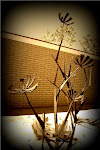In Germany, we toured small villages and castles that became a bit muddled in my memory as we went from one to another. One that stands out, however, is the huge castle on top of a mountain in Heidelburgh, where the famous university is located. It’s difficult to show in words how large the castles are, how thick the walls are, how many rooms there are. The castles are walled-in, with fortifications still evident against marauders who came to the villages to take possession of the land and the people. As we cruised down the river, we saw the ruins of many castles along the way. At least one of the castles has been modernized and become a hotel. Other castles are used as venues for weddings, and one is used by a society of people dedicated to keeping alive the medieval traditions. The group meets monthly in the castle and prepares meals in the kitchen area of the castle. There is no running water in the castles and the ovens use wood for fuel, but if you're into the Medieval times, it must be fascinating to participate in the events of the society.
There were many, many churches, too, each one large and imposing. It seems that the churches were protected from the warfare of the ages as most of them were still in good condition and continue to be used for worship services today, as we found as we entered our tour during services. The famous cathedral of Notre Dame is huge and beautifully maintained, and I felt awkward gawking my way through Sunday service. Interestingly enough, there is another Notre Dame cathedral, smaller than the one in Paris, but still impressive.It is difficult to believe that these magnificent buildings were erected by mere men: the vaulted ceilings raise hundreds of feet into the sky, with bell towers that still toll the times for worship to the surrounding villages.
Subscribe to:
Post Comments (Atom)





No comments:
Post a Comment